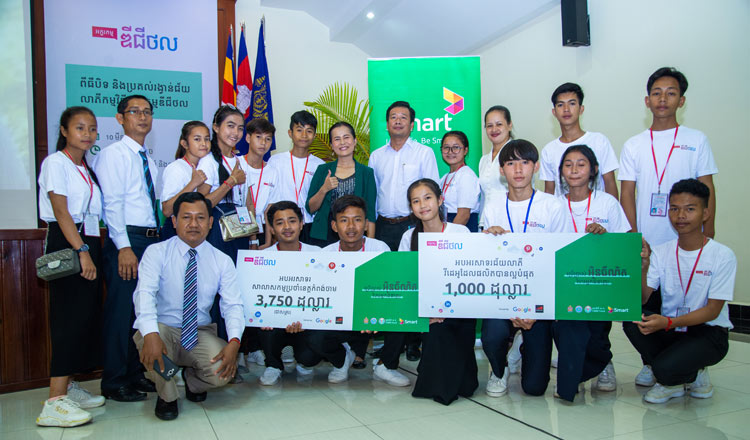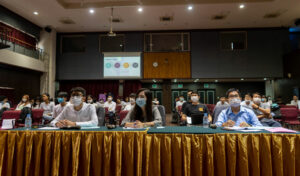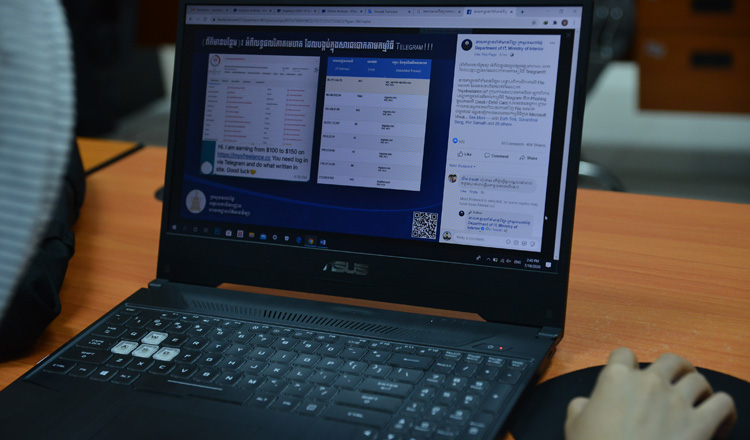Sabai Code: Developing Young Coders’ Potential
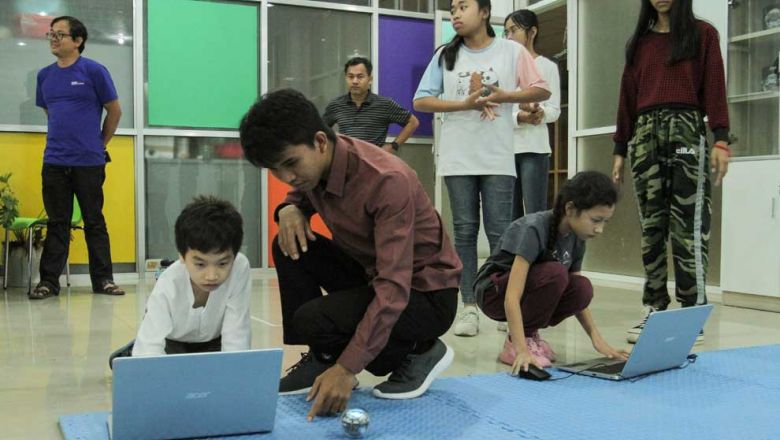 Sabai Code, which began operations half a year ago, welcomes kids as young as seven to study coding and robotics. Hean Rangsey
Sabai Code, which began operations half a year ago, welcomes kids as young as seven to study coding and robotics. Hean Rangsey
As the Kingdom begins to prioritize science, technology, engineering and mathematics (STEM) education, coding classes are becoming more popular.
Some private schools are buying well-known international curriculums and hiring foreign trainers to teach coding to children as young as six years old.
Sabai Code, which began operations half a year ago, welcomes kids as young as seven to study coding and robotics. What sets Sabai Code apart is its flexible curriculum adapted to a Cambodian context and its teachers, who are all Cambodians.
Soum Sareuon, 45, co-founder of Sabai Code, says that, unlike other schools, they don’t buy licensed curriculums from abroad. Instead, they create their curriculum using free lessons from code.org, a US-based non-profit organization.
This, he says, gives Sabai Code the flexibility to tailor the curriculum to the needs of Cambodian students.
“It is not so important to have foreign teachers because developers can’t be programmers. We also don’t have to speak English in STEM classes. We need only programmers to teach young students,” he says.
He says their students are in their fourth or fifth year at the Institute of Technology of Cambodia and therefore understand binary code well.
About 10 students sit in the classroom, which is facilitated by two teachers.
“We create and innovate during the lessons according to the students’ needs. We can do this because we don’t buy licensed curriculums from abroad. We are more flexible.
“I love to study and have always been self-taught. I learned programming in various languages.
“I studied IT, and I was also a teacher, so I know how to create a curriculum for our students,” he says, speaking to The Post from a classroom where students learn to code video games.
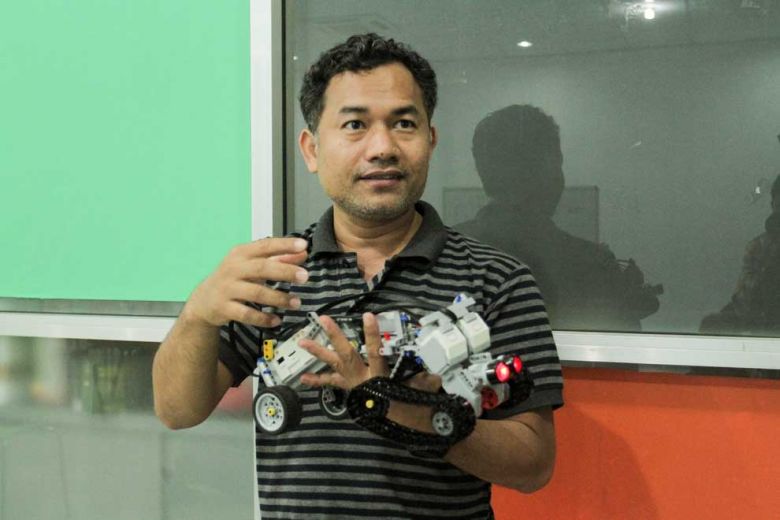
Sabai Code is the creation of a programmer, Sareuon, and a financier, Leng Piseth, who wanted to make a profit while aiding the development of Cambodian society.
“We want our children to start loving these subjects from a very young age, so we make the lessons fun. We want more children to be passionate about building, creating, and innovating. This will bring Cambodia forward,” Piseth says.
After graduating from a university here, Piseth went to the US to continue his studies. While there, he worked for a company that disbursed loans to startups. He eventually found love there and got married, but he never forgot about the less fortunate children back home. When he met Sareuon, he proposed a new venture – starting a company that trains young Cambodians in IT to propel the development of the Kingdom.
They named the company ‘Sabai,’ which means ‘happy’ in Khmer, to ease students’ worries about tackling subjects that many consider challenging and demanding. Programming requires students to study mathematics and physics, Sareuon points out.
“Many think programming is a hard subject. They think they have to be good at English and math if they wanted to study programming.
“By using the word ‘Sabai,’ we want learners to stop thinking about programming as something hard. Programming is not hard . . . it is about problem-solving. Children and adults can do it,” says Sareuon.
He said, for example, we can create a user registration system for school enrollment. It is not about math.
“We divide the task into small steps. We begin by creating a registration column for registering the name, address, contact number and so on.
“Then we write the code about users’ evaluation that sometimes makes the wrong register. In this case, we send them an error file,” he says.
Sareuon, who graduated from the Royal University of Phnom Penh in 2004, says that he was not good in English when he was a student, but that he loved researching and watching coding tutorials on YouTube.
He says he now creates lessons based on small tasks. Students learn to divide the task into smaller structures and start solving the problem one step at a time. They combine them and begin writing a program.
Carefully moving the colorful coding scripts on her laptop, Chan Ratana, 13, is coding a video game.
“I am learning to create the actions and directions of the character. It is not complicated. It is an interesting subject,” says Ratana, a seventh-grade student at Belti.
Unlike adult learners who start writing code with small coding scripts, young learners are attracted to colorful medium-size scripts.
“If we were to use the same teaching method as with the adults, the kids would not be able to keep up. We make it easy for them to understand the lesson and become engaged. Everything is part of the structural coding system,” says Sareuon, who also has a degree in mathematics.
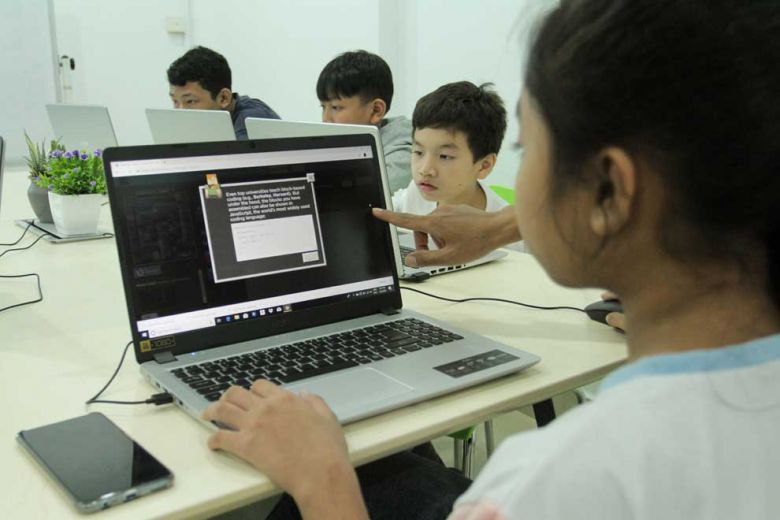
With two decades of working experience in programming and teaching, Sareuon and Piseth started school because they believe there are not many young entrepreneurs in Cambodia.
“Learning coding from a young age gives children more opportunities to have a bright future. If they want to go into business, they can create an app.
“Their parents can save some money for them and they can begin working on this after grade 12. If they start young, they can become entrepreneurs by the age of 18 or 19,” says Sareuon.
“When they can finally create their own app, Piseth can help them with funding,” he adds.
Sareuon says teachers also have the society’s best interest at heart. Despite not earning much, they continue their work because they are passionate about teaching the next generation of young Cambodians.
Serey Chhun Heng, 21, a fourth-year student at the Institute of Technology of Cambodia, is a teacher at Sabai Code. He is using an LED projector, walking around the classroom to answer his students’ questions.
“Studying in university and teaching young learners about coding is related to each other, especially the knowledge of calculating angle and gravity in which we should study math and physics,” says Chhun Heng, who has been teaching English since he was in grade 12.
Chhun Heng says his students have basic programming skills and can use the commands ‘if,’ ‘else,’ and ‘loop.’
“I think it is good that they learn coding from a very young age. Children are fast learners and can remember well. If they continue for three years, they will be able to create mobile apps and video games.”
Sareuon, now a web developer at Mango Map, says that an 18-hour course held over the weekend costs $150. On Women’s Day, Sabai Code offers a special course for female learners free-of-charge.
For more information, you can visit Sabai Code Facebook @sabaicode or its website: https://sabaicode.com.
Phnom Penh Post



